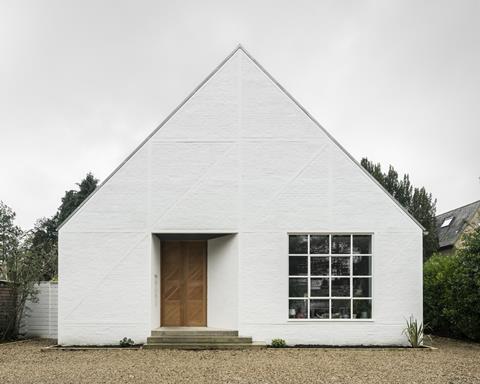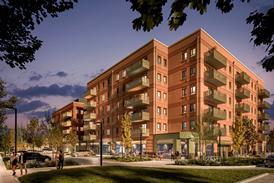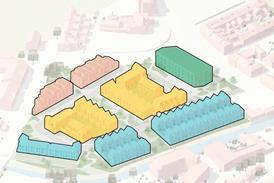This year’s RIBA House of the Year shortlist was a celebration of traditional typologies, but also economic exclusivity, writes Ben Flatman

For much of the past century, many of the world’s most famous architects spent their time telling each other that what mattered most in architecture was breaking away from tradition. Modernism, they often believed, required the adoption of new forms and new ways of living.
Not everyone conformed to this view. There were some often-overlooked architects who embraced a modernism that sought to engage with history and tradition - just in a contemporary idiom. There is even a reasonable case to be made that Le Corbusier was as much inspired by historical precedent as he was by ocean liners and grain silos.
But a prevailing and dominant theme throughout the middle of the 20th century was an almost unshakable faith in cutting-edge technology and a belief that architects had a responsibility to reshape not only our cityscapes, but the very way in which people lived. Flat roofs, tabula rasa urbanism and open-plan layouts prevailed.
Postmodernism challenged this orthodoxy and resulted in a splintering of the architectural discourse. Because of this, there stopped being a single prevailing narrative about what architects should do. Although the resulting architecture has not always been good, the diversity that postmodernism fostered has been undeniably positive.
It would be foolhardy to claim that architecture’s obsession with novelty is over.
Since then, modernism has been rediscovered. It is now arguably as much a historical tradition as classicism. Architects have been given licence to create mash-ups of different styles, and to make overt historical references. The resulting architecture is often more formally playful and yet theoretically serious than that which came before.
And the exploration of more traditional typologies, such as terraced housing, buildings that define streetlines, and homes where rooms have clearly demarcated uses, points towards a growing interest in what might previously have been dismissed as conventional ways of designing and living.
It would be foolhardy to claim that architecture’s obsession with novelty is over. But there has been a clear shift, particularly among younger architects, towards finding what is interesting in the ordinary and every day.
The shortlist for this year’s RIBA House of the Year could almost be seen as a manifesto for this new traditionalism. It includes plenty of pitched-roofs, a mews house and even some mock-Tudor references. Some of the houses feel more closely connected to the Victorian or Edwardian eras than to 20th-century modernism.

David Kohn Architects’ winning Red House does not remotely try to hide its fascination with historical English domestic architecture. Its postmodernist take on the arts and crafts movement is perhaps slightly tongue in cheek, but clearly not intended as a joke.
With its elongated form, deeply overhanging eaves and gently protruding bay windows, it borrows liberally from the past, while still being unmistakably contemporary. This is how most architects and builders have designed throughout history.
It is almost as if architecture, apparently rootless for so long, is tentatively reconnecting with its past. Does this mean that tradition, in all its manifestations, is no longer a dirty word?
It makes you crave a beautiful council house, and some more robustly urban architecture
One obvious question arises from this, and that is where are the overtly historical traditionalists on the RIBA shortlist? Why for example, has a thoughtful and talented classicist, such as Craig Hamilton, never been included. This kind of cordon sanitaire between contemporary and “traditional” architecture seems increasingly pointless. Who is afraid of whom in this context?
There is something else that strikes me about this award, and that is the fact that it so unashamedly celebrates the private residence. There is a surfeit of country cottages, barns and elegant beach shacks in Dorset and Suffolk, several of which are presumably second homes.
It feels like, and frankly is, a celebration of a socially and economically exclusive world, made doubly jarring by the current environmental and social crises that we face. It makes you crave a beautiful council house, and some more robustly urban architecture.
>> Also read: David Kohn bags RIBA House of the Year
















2 Readers' comments